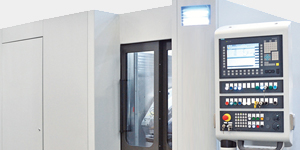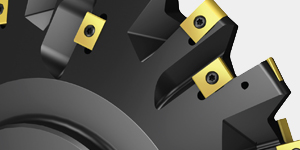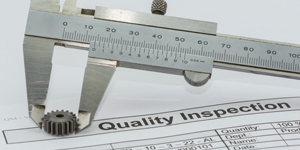Powdered metal gears represent a breakthrough in precision manufacturing. These components combine cost-effective production with high-performance characteristics.
Key Takeaways
Powdered metal gears use up to 97 percent of raw materials compared to 60 to 70 percent for traditional machining, reducing waste and manufacturing costs.
The powder metallurgy process creates complex geometries and integrated features in a single step that would require multiple operations with conventional manufacturing.
Oil-impregnated powdered metal gears provide self-lubricating properties that reduce maintenance requirements and extend service life.
What Are Powdered Metal Gears?
Powdered metal gears are precision components created through powder metallurgy. This process transforms metal powder into finished gears without traditional machining. The result is accurate, durable components ready for challenging applications.
The powder metallurgy process starts with carefully selected metal powders. These powders get compressed into gear shapes using precision tooling. Next, the compressed parts undergo sintering — a controlled heating process that bonds the metal particles together. This creates solid, strong gears with exact dimensions.
Traditional gear manufacturing cuts material away from solid metal blocks. Powder metallurgy builds gears from the ground up. This difference creates unique advantages in both cost and performance. A collaborative engineering approach can help clients get familiar with gearbox manufacturing processes to select the best solution for their needs.
Key Advantages of Powdered Metal Gears
Powdered metal gears deliver substantial cost savings compared to machined alternatives. The near-net-shape manufacturing process uses up to 97 percent of raw materials. Traditional machining wastes considerable material through cutting and shaping operations.
Production efficiency increases with powder metallurgy. Complex gear geometries that require multiple machining operations can be formed in a single step. This reduces manufacturing time and labor costs while making higher production volumes more economical.
Dimensional accuracy remains consistent across production runs. The controlled compression and sintering process maintains tight tolerances. Many powdered metal gears require no secondary machining operations, saving time and reducing total manufacturing costs.
Performance benefits include natural noise reduction through the slightly porous structure of sintered gears. Oil impregnation creates self-lubricating properties that extend service life and reduce maintenance requirements. A testing facility can validate these performance advantages through comprehensive testing protocols when aligned with a zero-defect policy.

Types and Applications of Powdered Metal Gears
Spur gears are the most common powdered metal gear type: These cylindrical gears feature straight teeth that transfer power between parallel shafts. They work well in automotive transmissions, power tools, and industrial equipment.
Helical gears have angled teeth that provide smoother operation than spur gears: The angled contact reduces noise and vibration during operation while handling higher loads. These gears operate more quietly and efficiently.
Bevel gears change the direction of power transmission between intersecting shafts: Powder metallurgy creates complex bevel gear geometries that would be expensive to machine. These gears appear in differential assemblies and right-angle drive systems. (Figure 1)
Automotive applications represent the largest market for powdered metal gears. Transmission components benefit from the cost savings and consistent quality. Industrial machinery relies on these gears for conveyor systems, pumps, and processing equipment. Power tools use compact powdered metal gears to maximize power density while minimizing weight.
Understanding the types of gearboxes provides deeper insight into how different gear configurations serve specific applications.

Powder Metallurgy Manufacturing Process
Metal powder selection forms the foundation of quality powdered metal gears. Iron-based powders provide strength and wear resistance for most applications. Copper additions improve machinability and corrosion resistance. Nickel increases strength and toughness for challenging applications. (Figure 2)
Powder blending creates uniform material properties throughout the gear. Lubricants reduce friction during compaction. Binders help maintain shape before sintering. The precise powder mixture determines final gear properties.
Compaction uses specially designed tooling to form gear teeth with exact profiles. High pressure shapes the powder into precise gear geometries. The “green” part maintains its shape but lacks full strength. Careful tool design creates accurate tooth forms and hub features.
Sintering transforms the compacted powder into solid metal through controlled heating. Temperatures reach 1,800°F to 2,050°F in protective atmospheres. The metal particles bond together without melting completely. This process develops final strength and dimensional stability.
Quality control monitors every step of production. For example, Cotta’s ISO certificate demonstrates its commitment to consistent manufacturing standards that support a zero-defect policy. Dimensional checking verifies gear accuracy before and after sintering.
Materials for Powder Metallurgy Gears
Iron-based alloys form the backbone of most powdered metal gear applications: Pure iron powders provide basic strength and wear resistance. Carbon additions increase hardness and strength for moderate load applications.
Steel alloy powders deliver higher performance for challenging applications: Nickel steel combinations provide excellent strength-to-weight ratios. Chromium additions improve wear resistance and hardenability. Molybdenum increases toughness and fatigue resistance.
Copper alloys serve specialized applications requiring corrosion resistance: Brass compositions offer good machinability and moderate strength. Bronze alloys provide enhanced wear resistance for sliding contact applications. These materials work well in marine and chemical processing environments.
Material selection depends on specific application requirements. Load capacity, operating speed, and environmental conditions guide the choice. An engineering team can collaborate with clients to know the components of a gearbox to identify the right material for each component.

Why Choose Powdered Metal Gears Over Traditional Manufacturing
Manufacturing efficiency favors powder metallurgy for medium- to high-production volumes. The initial tooling investment pays off quickly with increased production. Traditional machining requires multiple setups and operations for complex gear shapes. (Table 1)
Performance characteristics often exceed those of machined gears. The controlled porosity allows for oil impregnation, providing self-lubrication. Consistent material properties reduce variation between parts, supporting quality and reliability.
Design flexibility opens new possibilities for gear optimization. Integrated hubs, keyways, and mounting features form during the initial compaction. Multi-level gears with different section properties become feasible. Complex internal passages for lubrication can be incorporated.
Custom-built solutions can help determine the best manufacturing approach for specific requirements. Collaborative engineering partnerships can be formed to analyze production volumes, complexity, and performance needs.
Frequently Asked Questions About Powdered Metal Gears
How long do powdered metal gears last compared to machined gears?
Powdered metal gears typically match or exceed the lifespan of machined gears in most applications. The oil-impregnated structure and controlled material properties often reduce wear rates and extend service life.
What is the maximum size limit for powdered metal gears?
Most powdered metal gears range from 0.5 inches to 6 inches in diameter, with thickness up to 2 inches. Larger gears become less economical due to press capacity limitations and material costs.
Can powdered metal gears handle the same loads as steel gears?
Modern powdered metal gears achieve 80 to 90 percent of the strength of equivalent solid steel gears. Advanced alloy compositions and heat treatments bridge the performance gap for most industrial applications.
Do powdered metal gears require special lubrication?
Powdered metal gears often need less lubrication than traditional gears due to their oil-impregnated structure. Standard gear oils work well, but the self-lubricating properties reduce maintenance frequency.
Cotta brings more than a century of transmission innovation to powder metallurgy applications, building on Charles Cotta’s pioneering work that revolutionized the automotive industry. The company’s engineering team collaborates with clients as true partners to develop gear solutions that meet exact specifications.




























